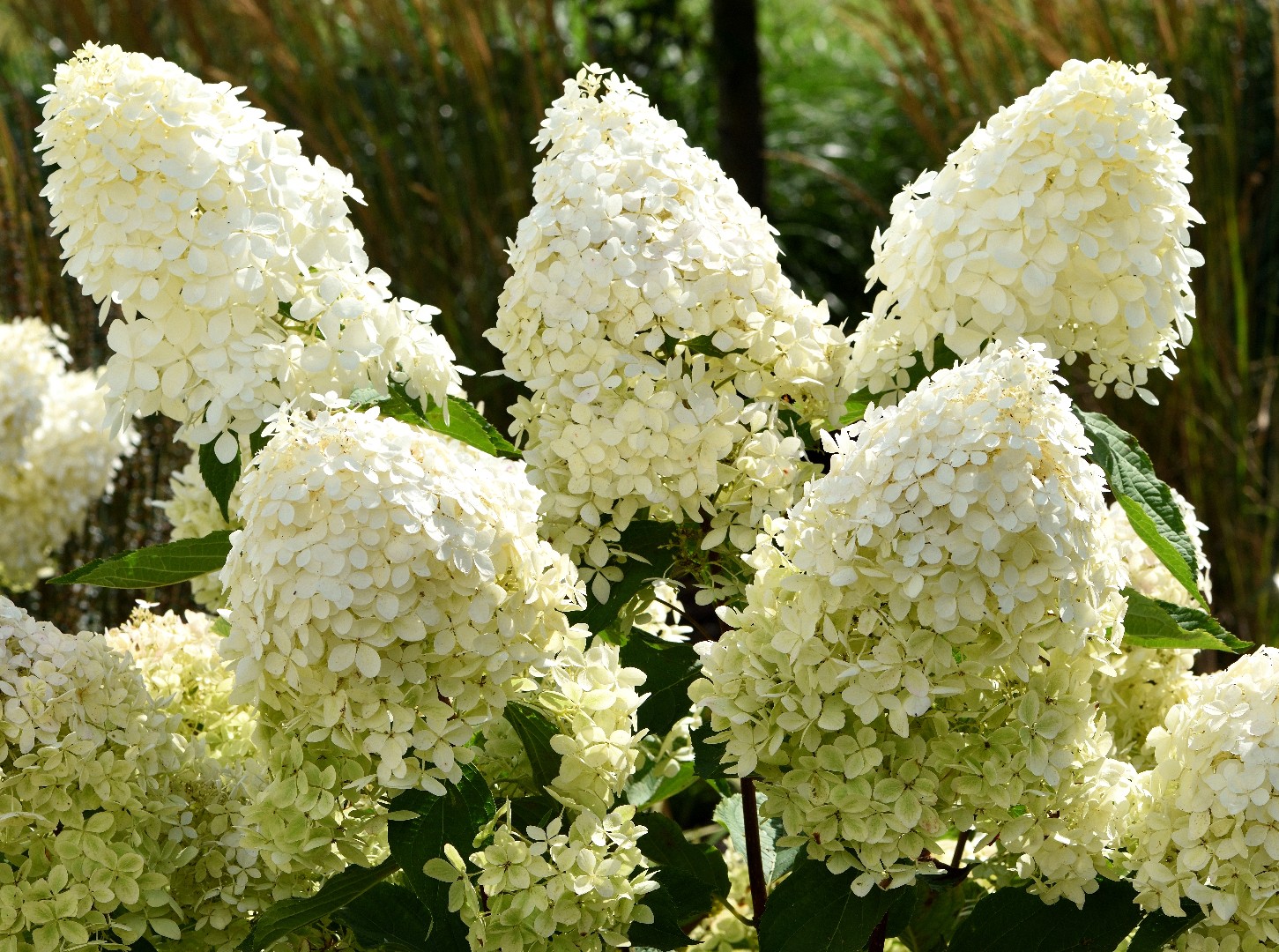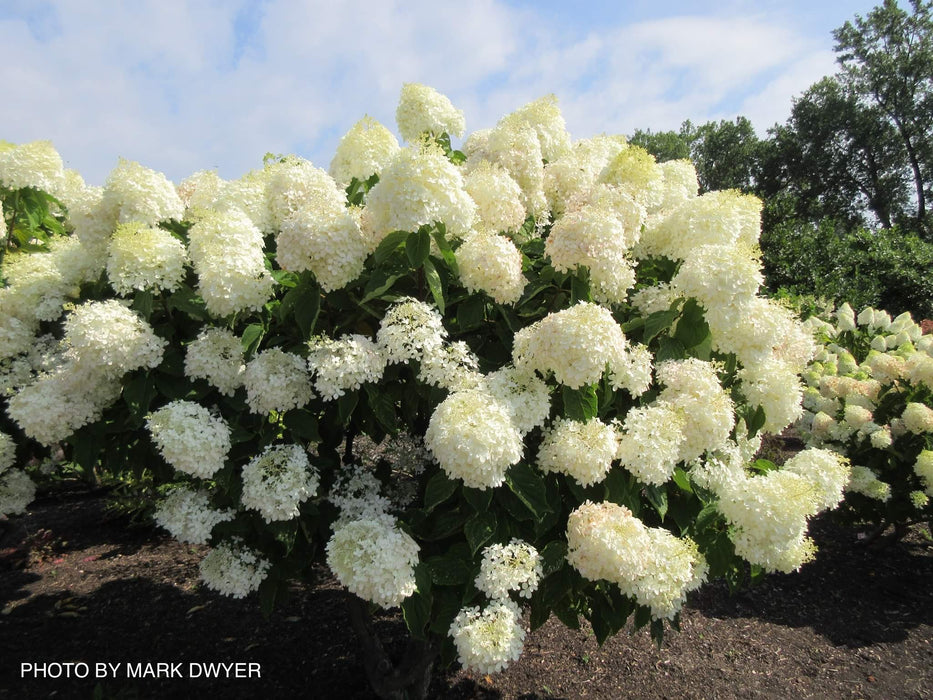The Phantom Hydrangea: A Mysterious And Mesmerizing Plant
The Phantom Hydrangea is a mysterious and mesmerizing plant that is sure to turn heads. With its large, cone-shaped flower clusters that open pure white and then acquire pink or green tones, the Phantom Hydrangea is a sight to behold. The blooms are the largest of any panicle hydrangea and persist and add winter interest. It blooms on new wood, starting in summer and blooming until fall.
The Phantom Hydrangea is a relatively new variety of hydrangea, first introduced in 1997. It is a cross between Hydrangea paniculata 'Grandiflora' and Hydrangea paniculata 'Tardiva'. The plant is named for its ghostly appearance, as the flowers start out white and then gradually fade to pink or green.
The Phantom Hydrangea is a medium-sized shrub, growing to 6 feet tall and wide. It has a spreading habit and is well-suited for borders, hedges, or mass plantings. The plant is hardy in zones 4-8 and is relatively easy to care for.
The Phantom Hydrangea prefers full sun to partial shade and moist, well-drained soil. It should be watered regularly, especially during the flowering season. The plant does not require regular pruning, but dead or damaged branches can be removed in spring.
The Phantom Hydrangea is a beautiful and versatile plant that can be used in a variety of settings. It is a great choice for adding a touch of elegance to any garden.
Main Content
Growing Tips
The Phantom Hydrangea is a relatively easy plant to grow. It prefers full sun to partial shade and moist, well-drained soil. The plant should be watered regularly, especially during the flowering season. The Phantom Hydrangea does not require regular pruning, but dead or damaged branches can be removed in spring.
Here are some additional tips for growing the Phantom Hydrangea:
- Fertilize the plant in spring with a balanced fertilizer.
- Mulch around the plant to help retain moisture and suppress weeds.
- Protect the plant from strong winds, as the flower clusters can be damaged.
Pests and Diseases
The Phantom Hydrangea is generally resistant to pests and diseases. However, it can be susceptible to aphids, scale, and powdery mildew. If you notice any pests or diseases on your plant, treat them promptly with an appropriate insecticide or fungicide.
Companion Plants
The Phantom Hydrangea can be planted with a variety of other plants, including:
- Roses
- Daisies
- Peonies
- Hostas
- Ferns
When choosing companion plants, consider the size and color of the Phantom Hydrangea. The plant is relatively large, so it will need to be paired with other plants that will not be overshadowed. The white flowers of the Phantom Hydrangea can be complemented by the bright colors of roses or daisies.
Propagation
The Phantom Hydrangea can be propagated by division or by cuttings. To propagate by division, dig up the plant in spring or fall and divide it into two or three sections. To propagate by cuttings, take 4-6 inch cuttings in spring or summer and root them in a mixture of peat moss and perlite.
Conclusion
The Phantom Hydrangea is a beautiful and versatile plant that is sure to add a touch of elegance to any garden. It is relatively easy to grow and care for, and it is resistant to pests and diseases. The Phantom Hydrangea can be planted with a variety of other plants to create a stunning and colorful display.
If you're looking for a hydrangea that's sure to turn heads, look no further than the phantom hydrangea (Hydrangea paniculata 'Phantom'). This remarkable plant produces the largest flower heads of any panicle hydrangea, up to 15 inches long. The conical blooms unfold midsummer as a creamy white, then graduate to a blushing, soft pink as the summer progresses.
The phantom hydrangea is a relatively easy plant to care for, and it's hardy in zones 3-9. It prefers full sun to partial shade, and it needs well-drained soil. To help your phantom hydrangea reach its full potential, fertilize it in early spring and again in midsummer.
If you're interested in learning more about the phantom hydrangea, I recommend visiting . This website has a wealth of information about the plant, including its history, care requirements, and pest and disease resistance.
FAQ of hydrangea paniculata phantom
Question 1: What is Hydrangea paniculata Phantom?
Answer: Hydrangea paniculata Phantom is a deciduous shrub that is known for its large, white flower panicles. It is a relatively new variety, having been introduced in 1998. Phantom is a hardy plant that can be grown in USDA zones 3-8. It prefers full sun or partial shade and moist, well-drained soil.
Question 2: How do I care for Hydrangea paniculata Phantom?
Answer: Hydrangea paniculata Phantom is a relatively easy plant to care for. It requires regular watering, especially during the summer months. It also benefits from a monthly application of fertilizer during the growing season. In the fall, you should prune the plant back to about 12 inches above ground level.
Question 3: How do I plant Hydrangea paniculata Phantom?
Answer: To plant Hydrangea paniculata Phantom, you should choose a location that receives full sun or partial shade. The soil should be moist, well-drained, and slightly acidic. Dig a hole that is twice as wide and deep as the root ball of the plant. Place the plant in the hole and backfill with soil. Water the plant thoroughly.
Question 4: What are some common problems with Hydrangea paniculata Phantom?
Answer: Some common problems with Hydrangea paniculata Phantom include powdery mildew, aphids, and leaf spot. Powdery mildew can be treated with a fungicide. Aphids can be controlled with insecticidal soap or neem oil. Leaf spot can be prevented by watering the plant at the base and avoiding overhead watering.
Question 5: What are the benefits of growing Hydrangea paniculata Phantom?
Answer: There are many benefits to growing Hydrangea paniculata Phantom. It is a beautiful plant that adds a touch of elegance to any garden. It is also a relatively easy plant to care for, making it a good choice for even novice gardeners. Phantom is also a deer-resistant plant, so you can enjoy its beauty without worrying about the deer eating it.
Image of hydrangea paniculata phantom
5 different images of "hydrangea paniculata phantom" from Pinterest:
- Image 1: A full-blooming hydrangea paniculata phantom, with large, white flowers.

- Image 2: A close-up of the flowers of a hydrangea paniculata phantom, showing their delicate petals.

- Image 3: A hydrangea paniculata phantom in a garden setting, with other flowers and plants.

- Image 4: A hydrangea paniculata phantom in a vase, with its long stems trailing down.

- Image 5: A hydrangea paniculata phantom in the fall, with its leaves turning shades of red and orange.

Post a Comment for "The Phantom Hydrangea: A Mysterious And Mesmerizing Plant"